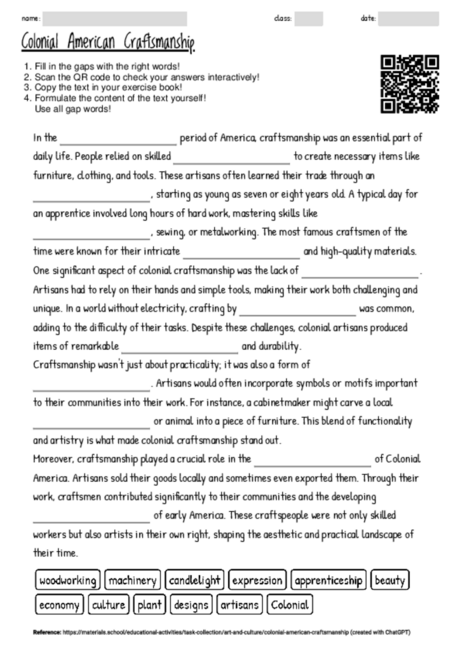Colonial American Craftsmanship
Cloze texts like this one about Colonial American Craftsmanship provide an engaging way for students aged 12 to 16 to learn about historical contexts and practices. By selectively omitting key terms, students are encouraged to focus on important concepts and vocabulary, enhancing both their comprehension and retention of the subject matter. This particular text introduces students to the concept of craftsmanship in Colonial America, highlighting the significance of artisan skills, the challenges faced by craftsmen, and the cultural importance of their work.
The text is structured to gradually build a narrative, starting from the basics of how artisans learned their trade, moving through the methods and challenges they faced, and culminating in the cultural and economic impact of their work. This approach helps students understand the broader context of craftsmanship in a historical setting. Additionally, the omission of key terms encourages critical thinking and active engagement, as students must infer the missing information based on the surrounding context.
The text's content is specifically tailored for the 12-16 age group, using language and concepts that are accessible yet challenging enough to stimulate intellectual curiosity. It also serves as a springboard for discussions about history, economics, and art, allowing for interdisciplinary learning. Furthermore, the emphasis on manual skills and the absence of modern technology can offer students a new perspective on contemporary craftsmanship and technology's role in art and labor.
In summary, this cloze text provides an effective and engaging educational tool, fostering not only historical knowledge but also critical thinking and comprehension skills. It can be utilized in various teaching phases, from introducing new concepts to reinforcing previously learned material.

